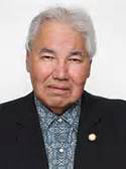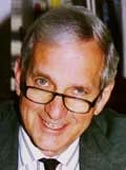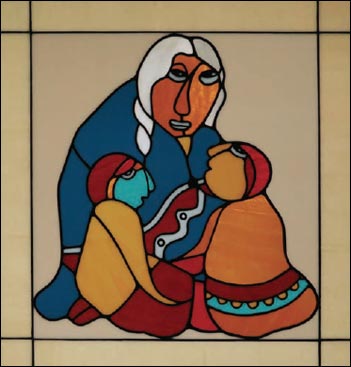EDITOR'S COLUMN
Truth and Reconciliation
 Murray Sinclair
|
“I have described a mountain, and showed a path. We call on you to do the climbing.”
- Justice Murray Sinclair
“He Who Writes in the Sky”
 Martin McKneally
|
The mountain of evidence of
predatory and misguided colonialist
educational policy, “taking
the Indian out of the child”,
overwhelms our capacity to
respond as individuals. My resolution
to respond was stimulated
by hearing He Who Writes in
the Sky speak at the Museum of
Human Rights in Winnipeg, a
few days before the release of the report of the Truth and
Reconciliation Commission. The oral presentation was
profoundly moving. I decided to use this column to offer
three compass corrections to help us follow the path to
reconciliation.
1. Use Universal Precautions
Catherine Classen, Academic Leader of the Trauma
Therapy program at Women’s College Hospital, gave
us a wise lesson on retraumatizing at the Sue MacRae
Lecture on Ethics and Patient-Centred Care. She advised
us to “use universal precautions”, treating every patient
as vulnerable to unintended retraumatization. For many
patients, and especially aboriginal patients, the impact
of the institutional setting, combined with the powerful
role and persona of the surgeon can trigger latent,
sometimes deeply hidden responses to earlier trauma.
“Time conceals all wounds; it does not always heal.
Interpersonal trauma experienced in childhood has especially
pernicious consequences that can span a lifetime.
Given the high prevalence of psychological trauma [one
in two women, one in three men], and its often devastating
effects, there is both an ethical and clinical obligation
to provide care that is trauma-informed.”
I had always thought post-traumatic patients were a
small minority, in the competent care of others like
Cathleen - never as my own patients. Even when treating
indigenous and other patients who were likely to be
trauma-conditioned, I didn’t see the mountain.

© The glass panel hanging in the conference room of the Surgery office, is
a reproduction by Bernard Langer of one of the four paintings in the series
“Homage to Grandfather” by Daphne Odjig,.an internationally recognized
Canadian First Nations artist. It is called “Learning”.
|
2. Adopt Indigenous Values
Jason Pennington, profiled nearby, helped me think
about indigenous values that we can honor and adopt
as we react to the tragic knowledge imparted in Justice
Sinclair’s report. John Bohnen drew attention to Jason’s
work to instill these values in our medical students. Jason
tells us not to reinforc e victimhood by asking paternalistically
“What can I do to help?”. We can adopt indigenous
values that will inform, augment and strengthen
our own practice. Aboriginal reverence for air, land and
water, for community and family can be learned and
practiced to help us overcome the emphasis on individualism,
autonomy, ownership, and independence from
the community that is overvalued in our own tribal
customs, laws and ethics.
3. Adopt Indigenous Customs
When pediatric neurosurgeon Patrick McDonald was
completing an MHSc in bioethics, he told a riveting
story from his early days in practice in Winnipeg. He
had safely removed all that could be resected of a brain
tumor in a young aboriginal child. When the tumor
recurred a few years later, he asked the boy’s mother
whether he should attempt further surgical treatment,
knowing that the operation could cause severe neurological
damage. Mother said “I cannot [be the substitute
decision maker as your tribal customs dictate]”. She
asked for a second meeting. To Patrick’s surprise, a large
group then filled the office. They said “This boy makes
our village better because we all care about him. We want
him to live, even if he is more disabled.” When Patrick
asked for a decision, Grandmother, the only person in
the room who had been silent, spoke for all, giving the
patient and the surgeon an indigenous communal form
of consent that cannot be found in our ethics, law, or
surgery books.
There is a mountain to be climbed. Indigenous guides
can help us on the path.
Martin McKneally
|
Readers have asked us to continue to publish and
mail the printed version of the Surgical Spotlight.
The cost is becoming prohibitive. Please consider
contributing at www.surgicalspotlight.ca, or by
sending us a cheque payable to the Department
of Surgery, University of Toronto to allow us to
continue sending out your copy of the Spotlight.
Thanks.
– THE EDITORS
|
|